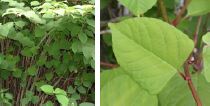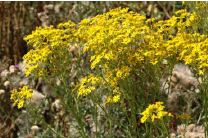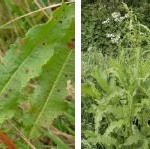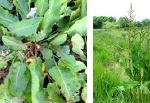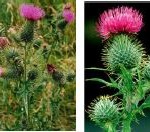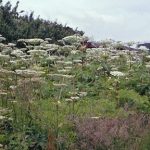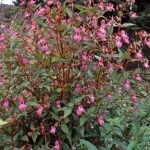Safe Disposal of Noxious Weeds
The noxious weeds described below must not be added to the general garden pile/container (for composting).
Such weeds must be securely sealed in strong bags and placed in the general waste pile/container.
Please contact the site manager if you need further assistance, or telephone Devon County Council Waste Management on 0345 155 1010.
Further information can be found on the government website.
-
Japanese Knotweed
Japanese Knotweed is a highly vigorous and hardy weed which can grow almost anywhere. It grows in clumps and can reach a height of 3 metres. Japanese Knotweed has a thick bamboo like stem which has a red and green pattern. Its leaves are light green, broad and triangular in shape. It can also have small white flowers.
-
Common Ragwort
Common Ragwort is highly poisonous to cattle and other animals, however not harmful to humans. This weed is a stout ragged plant which can grow to a height of 1 metre. It has long thin toothed leaves which are green on the top and have a whitish underside. It also has large clusters of yellow flowers measuring approximately 2cm across.
-
Curled Dock
Curled Dock occurs most commonly in fields and particularly in drier soils. It is a very resilient plant, it seeds can survive up to 70 years underground before growing. This plant may grow to 1.2 metres in height and has leaves which grow in a long thin heart shape and can reach 30cm in length. The leaves sprout from its bottom section and on its upper part it has flowering stems which are reddish-brown in colour.
- Broad-Leaved Dock
- Spear-Thistle
-
Creeping Thistle
Creeping Thistle is a smaller relative of the Spear Thistle which grows to between 1-1.5 metres tall. It has long thin barbed leaves and a thin stem. It will also grow a deep root system making it strong and perseverant. Its flowering thistle heads are pinky purple in colour and less spiky than the Spear Thistle.
-
Giant Hogweed
Giant hogweed is a tall, cow parsley-like plant with thick bristly stems that are often purple-blotched and it’s sap can cause severe skin burns. The flower heads can be as large as 60cm (2ft) across. Giant Hogweed can reach a height of 3.5m (11.5ft) or more and has a spread of about 1-2m (3.5-7ft).
-
Himalayan Balsam
Himalayan balsam is a tall growing annual, 2-3m (6-10ft) in height. Between June and October it produces clusters of purplish pink (or rarely white) helmet-shaped flowers.
The flowers are followed by seed pods that open explosively when ripe. Himalayan balsam grows rapidly and spreads quickly, smothering other vegetation as it goes.

